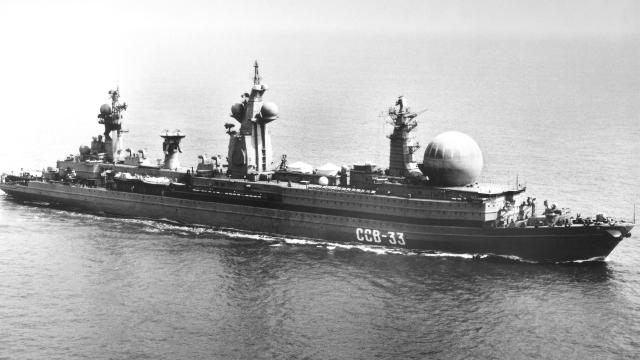Designed to act as the eyes and ears of the Soviet Pacific Fleet, this massive command ship was among Russia’s most ambitious Cold War constructs. Packing cutting edge electronic warfare and communications systems, this enormous ship could have become the monolithic centrepiece of Russia’s navy. So why did it end up rotting away as off-shore barracks instead?
Commissioned in 1989, the Ural (SSV-33) was a 265m long, 33,000-tonne communications and intelligence gathering vessel operated by the Soviet navy at the tail end of the Cold War. The Ural performed a variety of roles during its decade of service, including that of fleet flagship, space and missile tracking, electronic warfare and reconnaissance, and as a communications relay.
The Ural was built from an earlier Kirov class cruiser design and powered by a pair of 171 MWt nuclear reactors working in tandem with an oil turbine to produce a whopping 66,500 HP, enabling speeds in excess of 21 knots. Not bad for a ship so large that nearly 1000 sailors were needed to operate it.
Sporting the latest and greatest in Soviet electronics, the Ural offered unmatched intelligence gathering capabilities. Not only adept at identifying and tracking airborne, surface and underwater threats, the Ural could even keep tabs on passing satellites and spot ICBM’s before they reentered the atmosphere, rapidly evaluating and disseminating that intelligence to the rest of the fleet in near real-time — an unheard of capability at the time. What’s more, its electronic warfare systems were powerful enough to span the breadth of the Pacific ocean, allowing the Ural to conduct operations without ever leaving port.
Not that it actually could leave. The Ural was so overwhelmingly large that there wasn’t a pier in the Pacific big enough to dock it. As such, it had to be anchored just offshore with supplies and troops ferried out to it by smaller ships. The Ural proved so costly to operate — without even being deployed — that it was eventually converted into a floating barracks for naval officers before being decommissioned and scrapped in 2001.
